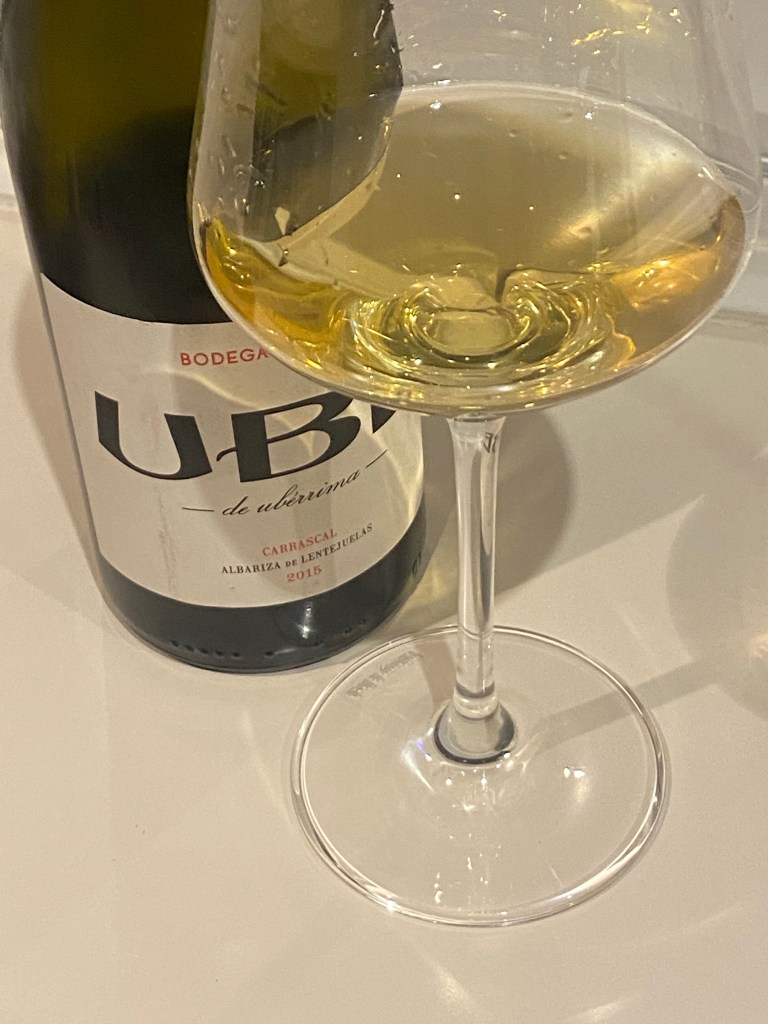
A special wine from a special winemaker.
The original UBE, 100% palomino from the Las Vegas vineyard in Carrascal de Sanlucar, and the third vintage of it that I know of after 2013 and 2014. Not just any palomino of course – three old varietals – that grow on the looser, antehojuela albarizas of a pago with a strong Atlantic influence.
It all adds up to a wine that is fresh and vertical – that barely touches the side of the nose, mouth and throat. The aromas and flavours are of white fruit and white flowers – the chamomile of manzanilla fame – which are fresh on the nose and at the start of the palate but then turn jammy and intense, jammy flavours that the mouth watering salinity stretch out and out – for all its vertical profile it is incredibly long. Long enough for me to finish the glass, write this paragraph, and fetch the bottle from the far corner of the house while still tasting it.
And as the wine is open it grows in flavour and aromas – the white flowers become more and more herbally aromatic, and the jammy fruit becomes more stewy, but in a wine that is all lightness, freshness and salinity.
The levity can be measured in degrees – only 12.5% – but the freshness and salinity are products of the variety and a clue as to what made the wines of the region world famous: the ability to concentrate flavour in freshness. At a time in history when wines were white and prized for their concentration, the fine profile of palomino must have been a fresh breeze.
And it is of course a wine made by Ramiro Ibañez, a special winemaker who has done as much as anyone to revive the fortunes of this most historic of wine regions, by projects demonstrating the importance of terroir and vintage, through publications, appearances and media, but most importantly through the pure expression of terroir in wines like this one.
His very good health, and time for another bottle …








